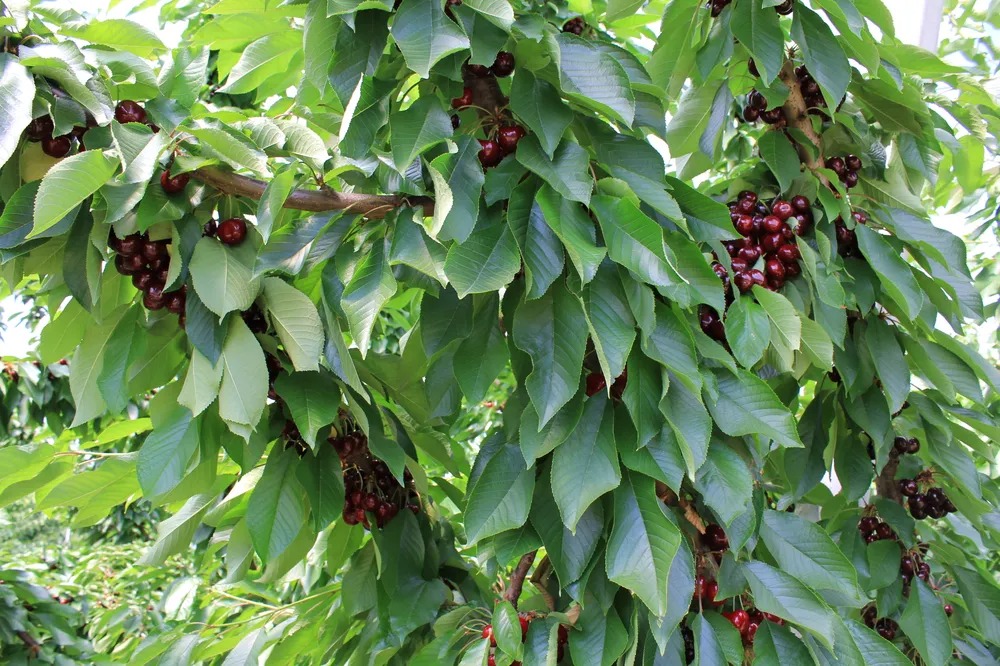The increasing demand for early-ripening cherries has led to the need for more efficient cultivation methods, including the use of clonal rootstocks capable of ensuring productivity and quality even under adverse climatic conditions.
A study conducted between 2018 and 2022 in the arid region of Volgograd, Russia, analyzed the influence of different clonal rootstocks on the cherry varieties Toy, Loznovskaya, and Memory of Zhukova, as well as the sweet cherry varieties Alexandria, Iput, Epos, and Yaroslavna.
The tested rootstocks were: LC-52 (30% growth reduction), RVL-2 and RVL-9 (medium-sized), VSL-1 (dwarfing, 50% growth reduction), and VSL-2 (dwarfing).
Biometric parameters such as canopy projection area, canopy volume, and trunk cross-sectional area were examined, along with graft survival rates and the productivity of variety-rootstock combinations.
Study results
The results showed that survival rates varied from 55.9% to 49.1% depending on the rootstock and from 75% to 35.7% depending on the variety.
The combinations with the best survival rates, exceeding 70%, included Epos/VSL-1 (100%), Memory of Zhukova/RVL-2 (71.4%), Iput/RVL-2 (71.4%), Alexandria/RVL-9 (71.4%), Epos/RVL-9 (75%), Alexandria/VSL-1 (74%), and Yaroslavna/VSL-2 (75%).
Among the rootstocks, RVL-9 exhibited the best survival rate, with over 60% success across different varieties, while the LC-52 rootstock promoted the most vigorous plant growth.
Conversely, RVL-9 and VSL-1 resulted in weaker growth.

Impact on productivity
Productivity was significantly influenced by the rootstock. The highest-yielding rootstocks were RVL-2 and RVL-9, with an average of 5.8 kg/tree (12.8 lbs/tree) and 4.9 kg/tree (10.8 lbs/tree), respectively.
Among these, the combinations Toy/RVL-9 (7.1 kg/tree - 15.6 lbs/tree), Toy/VSL-2 (8.1 kg/tree - 17.9 lbs/tree), Loznovskaya/RVL-2 (7.1 kg/tree - 15.6 lbs/tree), and Memory of Zhukova with RVL-2 (7.3 kg/tree - 16.1 lbs/tree) and RVL-9 (7.6 kg/tree - 16.8 lbs/tree) stood out for their higher yields.
Additionally, the varieties Toy, Alexandria, and Epos produced the largest and highest quality fruits across all tested rootstocks.
Importance of rootstock selection
The use of clonal rootstocks proved essential in adapting cherry cultivation to the region’s climatic conditions.
The careful selection of variety-rootstock combinations allows for optimized yield and fruit quality while also improving plant resilience to environmental stress factors such as drought and low temperatures.
Another crucial factor for rootstocks is graft compatibility with the variety. Poor compatibility can lead to growth issues and reduce plant longevity.
In this study, some combinations exhibited signs of incompatibility, such as unbalanced growth or low survival rates. This highlights the need for further long-term studies to assess the stability of these combinations over time.

Conclusions and future perspectives
The study confirmed the importance of carefully selecting variety-rootstock combinations to maximize plant survival, growth, and productivity, particularly under challenging climatic conditions.
The rootstocks RVL-2 and RVL-9 stood out for their ability to promote both good growth and high productivity under the soil and climate conditions of Volgograd.
However, to obtain a comprehensive assessment of these combinations, long-term monitoring is necessary, considering additional parameters such as frost resistance, drought tolerance, and disease resistance.
This approach could provide new perspectives and improve the efficiency and sustainability of cherry cultivation in arid regions like Volgograd.
Images: Szkolka Doliński
Source: Solonkin, A. V., Nikolskaya, O. A., & Kasyanova, G. V. (2024). Influence of clonal rootstocks on growth and development of cherries and sweet cherries in the Volgograd Region. Research on Crops, 25(3), 451-456. http://dx.doi.org/10.31830/2348-7542.2024.ROC-1085
Andrea Giovannini
University of Bologna (IT)
Cherry Times - All rights reserved














